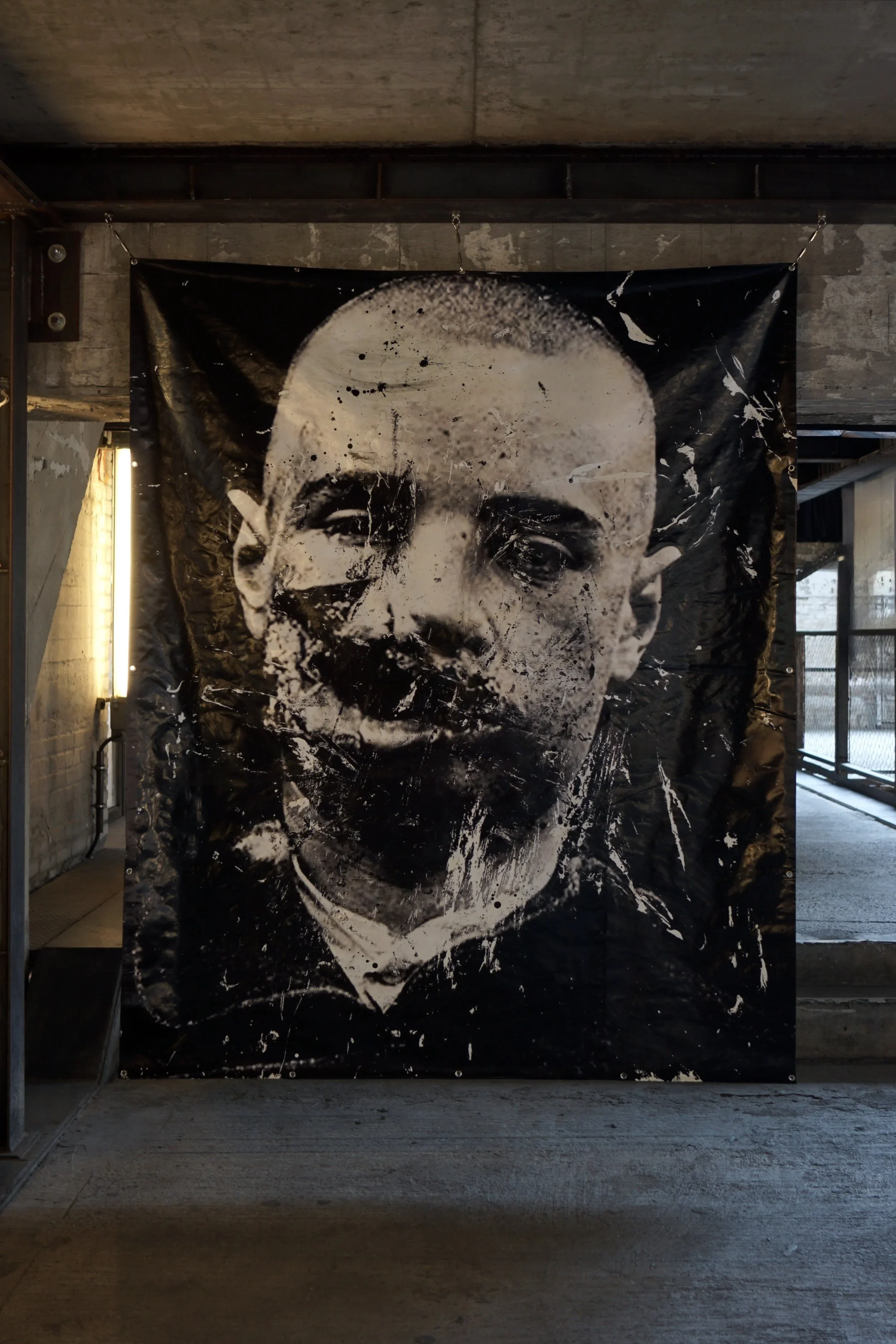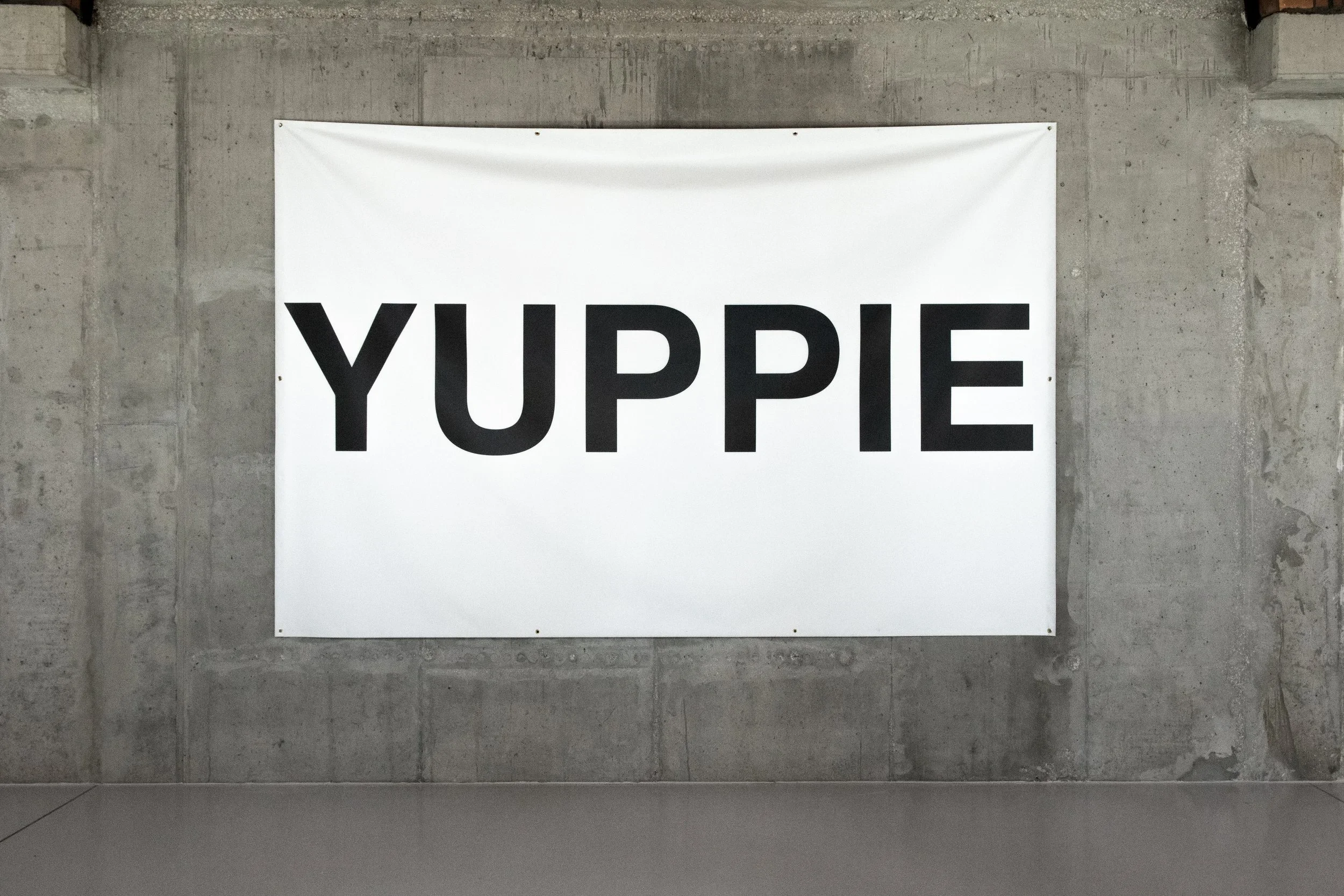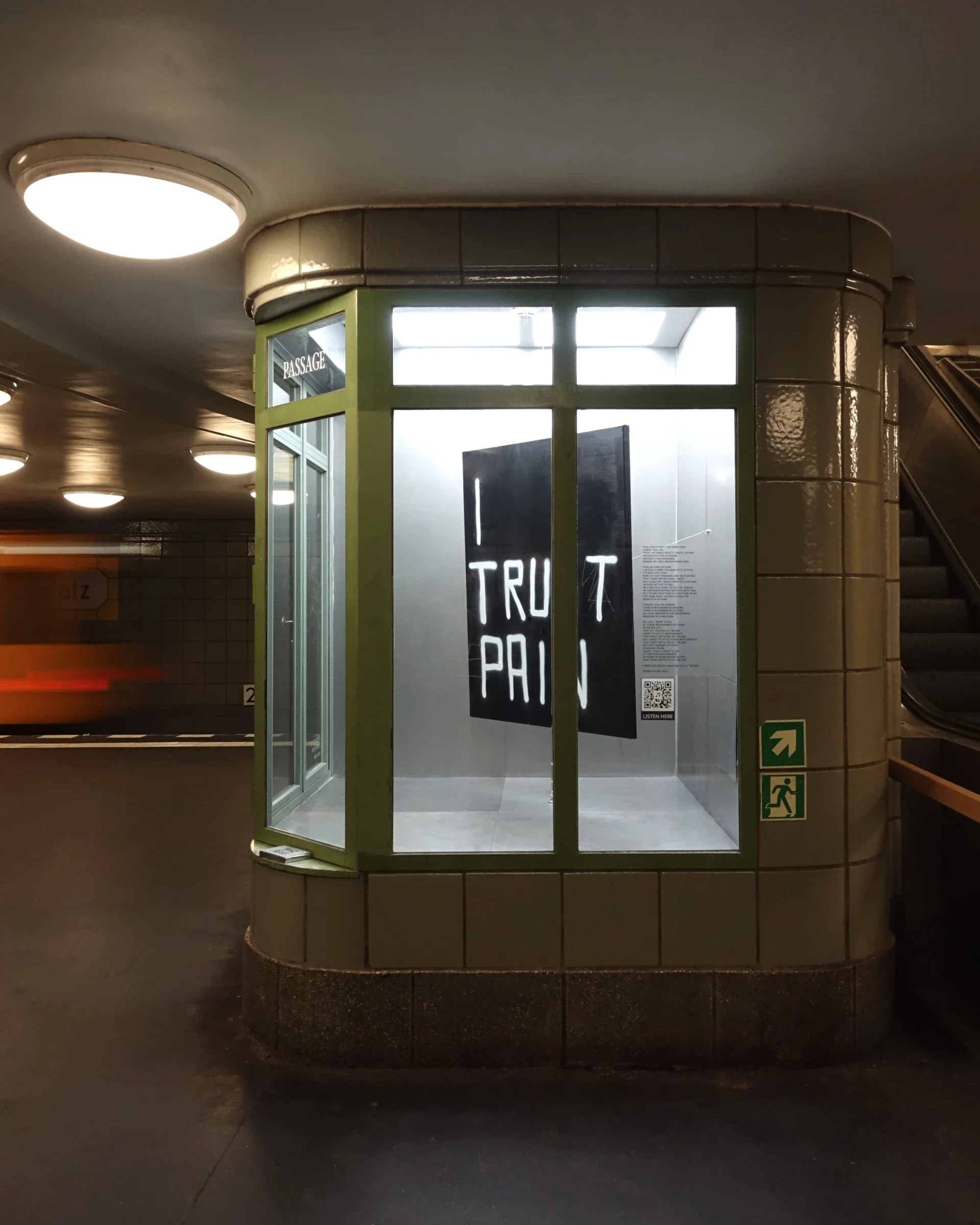Richie Culver Trusts Pain
Text: Niki Bernath
There is something weird and beautiful about the contemporary North England cultural scene. Blackhaine, Rainy Miller, Hannah Rose Stewart, Bruxism, Space Afrika, aya, Iceboy Violet, Richie Culver. These and other artists who often work in different fields of art at the same time, represent what has come to be called Northern Gothic.
photo Brett Walker
If I think about their work I think about my personal experiences. Whether it was Blackhaine's live performance when he stepped out from a cargo container into the monumental concrete premises of Berlin's Kraftwerk, Rainy Miller singing his autotune arias, while crumbling on the floor of an underground club, putting together Hannah Rose's exhibition in a former public pool or just driving high speed on a highway listening to Richie Culver’s Scream If You Don't Exist and also screaming. It all gives me a vision of an object which looks cold, but is warm once you touch it. Like an operating theatre in an abandoned medical centre you found somewhere in the woods on the coldest day of the year, but when you step in, you just feel safe.
Richie Culver at Polyphonic Views, Funkhaus Berlin
Richie Culver, whose new album I Trust Pain just dropped, was born in Hull, the same city where Genesis P-Orridge met Cosey Fanni Tutti in 1969 at an acid test party (and the rest is history). The work of this now 45-year-old "London-based creative" is filled with references to the North and his former home. Culver's debut album was called I Was Born by the Sea (2022). But before I dive into that (North) sea, it's important to say that most people know Richie as a painter writing weird, funny, cynical, but harshly real words and rough sentences on mostly white canvases.
His Instagram presence grew significantly, and anyone who follows him has to know that he posts a lot about this dichotomy of being a visual artist and an underground musician. He also made it clear that he finds much more 'realness' in the underground music scene than in the art world. Even though he exhibits frequently, he keeps it selective when working with commercial galleries, usually just one or two exhibitions per year, while the rest is dedicated to institutions or more niche festivals, project spaces, and initiatives he appreciates.
YUPPIE, Program Wroclaw
Besides that, there's also another moniker: Quiet Husband, Richie Culver's techno and clubbing-oriented project. He's been producing and DJing in some of Europe's best clubs, including Berghain and Tresor. Culver's constant shifting across different fields, not just between arts and media, but within music and genres themselves, naturally leads to his numerous collaborations with various artists. His first release ever was a collaborative EP with Blackhaine titled Did U Cum Yet / I'm Not Gonna Cum (2021). This led to multiple collaborations with Pavel Milyakov, Space Afrika, Rainy Miller, and having his music remixed by some of today's most prominent producers such as Aho Ssan.
His recent release I Trust Pain was written and produced by Richie Culver, with production contributions from Bitter Gold, Blackhaine, and especially Rainy Miller, on whose label Fixed Abode the album is being released.
Album cover artwork
Even before anyone had a chance to listen to the album or read the press release, it was clear from Culver's Instagram stories that this would be a trap music record. Surprising, of course, since no one would expect a painter in his forties, releasing underground electronic music with a techno project to venture into rap, or rather trap. But creative freedom is one of Richie Culver's defining qualities, whether on canvas, in gallery spaces, in the studio, or in the DJ booth.
The album starts with an Intro that is basically a sample of war reporter Jake Hanrahan responding to the ubiquitous question:
What does the underground mean to you? It's basically what's going on, on its own, as a culture, as lifestyle, as a way of life, without any regard to what's happening in the mainstream.
Of course it's trap, but it's also not, and he raps but not only. There's a strong connection to his spoken word delivery. Even in Chase Money, the second track after the intro, Richie spits bars about something so stereotypical for hip-hop as money. There's no doubt what's coming from the speakers is a trap record.
But when you listen more carefully, this money chasing comes out of the stereotype here, because as Richie says: The song explores the experience of repeated geographic displacement, moving from town to town in search of a so-called 'fresh start.' Over time, this transient lifestyle reduced my sense of self to a singular trace: my accent. This pattern of constant relocation was driven by the hope that a new environment might bring clarity, transformation, or renewal. However, I came to recognize that each move carried a fundamental flaw—I brought myself with me. The unresolved personal struggles remained constant, regardless of the change in setting.
Then there's the ballad North Sea Calls, which emphasizes Culver's perpetual return to the region, both in his work and in his thoughts. The track is connected to another of Culver's collaborations, this time a video piece made by interdisciplinary artist, designer, poet, and author Allen-Golder Carpenter. Those interested in visual arts could have caught Carpenter's work in the past year at various Berlin locations such as Schinkel Pavillon, 032c Gallery, or Kraupa-Tuskany Zeidler.
Speaking about Berlin, the next song I Trust Pain immediately reminds me of one of Richie's exhibitions, particularly the project for Passage, a curatorial platform and exhibition space inside Berlin's Hermannplatz U-Bahn station, where artworks are installed in a glass container embedded in the original station architecture.
I TRUST PAIN, Passage, Berlin
The exhibition text says that I Trust Pain referred to a paradoxical relationship with suffering, particularly among addicts, homeless, and other marginalized groups and also that Culver knows this feeling from darker times in his life. While living in Berlin over a decade ago, he spent time negotiating the landscape of Hermannplatz and U8 Line when struggling with addiction. For the exhibition, a sound piece was also created, released on a hand-painted cassette, with proceeds from sales donated to FIXPUNKT, an organization dedicated to helping the homeless most affected by the drug crisis in Berlin.
It is important to mention this duality of Culver's work. As he himself demonstrated, the visual works, mainly paintings, are basically mind maps for his musical projects. He explains:
Each track relates directly to a painting, sculpture, or photograph. The connection isn't illustrative—it's emotional, disruptive, and mostly autobiographical. I'm not translating the visual into audio. I'm building friction between them.
Stine Deja and Richie Culver, Nervous Energy, Tick Tack, Antwerp
Then there is the most introspective part of the album with tracks I Loved You, Sarah, or Some Stories Linger, which opens with Richie saying:
I guess sometimes when you're in it and living it, it's hard to see how beautiful it actually is, until it's over.
Another track called Nothing brings me back to one of Culver's exhibition projects, which New Translation visited in February 2025 at Nuno Centeno gallery in Porto. The exhibition was called Paintings about Nothing, and the lyrics can't be more on point: I wanna live my life about nothing / I wanna write songs about nothing / I wanna talk to you about nothing.
Paintings about Nothing, Nuno Centeno, Porto
Curse, the closing track on the record, opens with harsh noise that evokes his live performances, where he uses a heavy chain alongside spoken word to create post-industrial cacophonous sound pieces.
Richie Culver sums up I Trust Pain like this:
I'm not sure whether this is the start or the end of a chapter within my practice. There are multiple layers to this record. It functions both as a standalone work and as part of a wider ecosystem—one that merges sound with image, reference with instinct.
It's difficult to add anything else. I would say that pain is a trap with no way out, but if it has perfect acoustic conditions, why not make some music in it?





